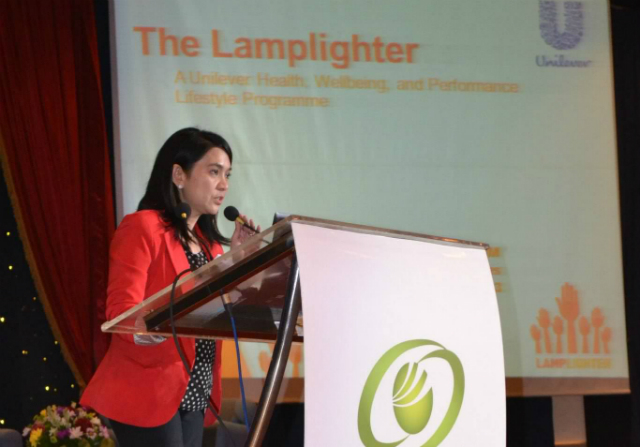SUMMARY
This is AI generated summarization, which may have errors. For context, always refer to the full article.

MANILA, Philippines – Wellness programs set up at work benefit both employer and employees in the long-term, said Uniliver Philippines senior medical advisor Marge Lazaro-Leachon in her 5th Doña V. Tytana Memorial Lecture delivered on June 14.
Data presented from an independent review of The Lamplighter, a worldwide health and wellness program designed for employees of Uniliver Global, show a 6.1% return of investment (ROI).
According to Leachon, a flexible but consistent well-being program available for all employees leads to increased productivity and better performance in the workplace.
“We have fitness instructors available and nutritionists for monitoring. We have Zumba classes, too. We have a covered basketball court. Badminton and volleyball courts are also in place,” shared the health specialist, adding that these facilities are there to reinforce the company’s health initiatives.
Employee absenteeism decreased over time as a result of the program. There were also lesser reports on job dissatisfaction.
Health risk assessment
The program starts with a health risk assessment. Employees undergo a physical exam and answer a questionnaire that evaluates their mental resilience and current lifestyle behaviors, among others.
Based on the test results, employees are clustered into 3 colors indicating the level of their health risk. Green, yellow, and red corresponds to low-risk, moderate-risk, and high-risk, respectively.
“The clustering is the same across nations. It is a global standard,” said Leachon, describing Uniliver’s uniform system of clustering.
Interventions in lifestyle are introduced to moderate-risk individuals, while high-risk employees focus on disease management and treatment. Low-risk employees are simply encouraged to maintain and reinforce a healthy diet and physical exercise.
In an interview, Leachon said intensive counseling is done with employees who are consistently in the high-risk cluster.
“Usually, these are the ones who already have an existing disease,” she explained.
Opt-out mechanism and rewards
Since the program demands behavioral and lifestyle changes, employees are allowed to opt out of the interventions.
Asked if there are incentives granted to employees who exhibit significant changes in health and lifestyle, Leachon said there are currently none, adding that good health is in itself the program’s reward.
The program started in 2007 with only 30% of Uniliver Philippines employees involved. Today 80% have already opted for the interventions introduced by The Lamplighter.
“As its name suggests, The Lamplighter seeks to enlighten,” said Leachon in her lecture.
The Doña V. Tytana Memorial Lectures are held yearly with the support of the GT-Metro Foundation and the Manila Doctors Hospital. – Rappler.com
Add a comment
How does this make you feel?
There are no comments yet. Add your comment to start the conversation.